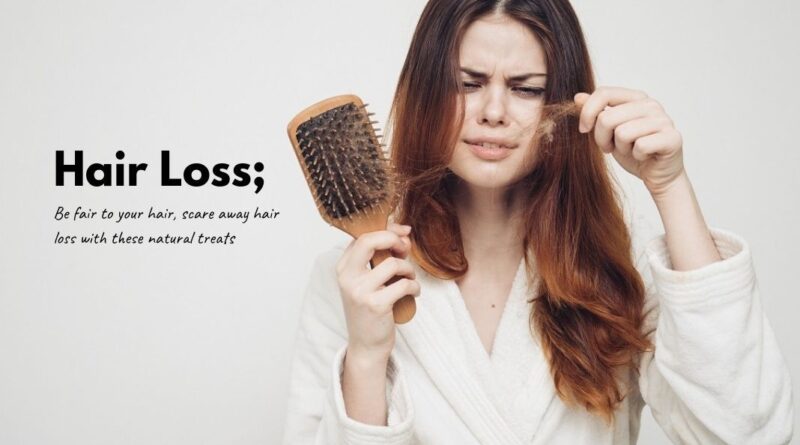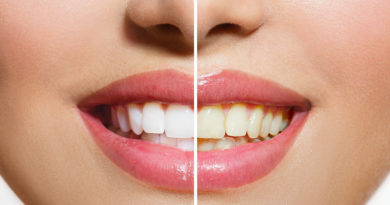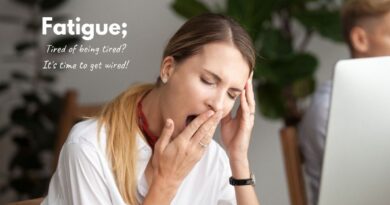Natural Remedies for Hair Loss You Should Try
Has looking at the shower drain after a bath become a nightmare? Do you find hair strands all around the home? Are most of the waste in the vacuum bags hair strands? If the answer to these questions is yes, then you may be suffering from Hair Loss.
You are not alone. Do you know that around 20 million women suffer from Hair Loss? The figure for men is even higher, at 35 million (1). It isn’t limited to a particular age. Although the chances of Hair Loss do increase with age. Increasing stress and decreasing water quality have also played a role in making Hair Loss a widespread phenomenon. There is a good chance that either you or someone you know is currently suffering from it.
“But don’t we lose hair every day? How do I know whether it is a problem? How much Hair Loss is natural in a day?”
You lose around 50 to 100 strands of hair on any given day. It is a part of the hair growth cycle. Older hair strands fall to give way for new hair strands to grow. It becomes a problem when the hair is not growing back at the same rate that you are losing it. A thinning hairline is the most obvious way to detect it. If you feel that the volume of your hair has decreased over time, then you are suffering from Hair Loss.
Table of Contents
Did You Know!
| Hair follicles disintegrate completely in their terminal phase, and new follicles replace them. |
Don’t start panicking yet! Every problem has a solution, at least a partial one. Since Hair Loss is such a common issue, it has garnered a lot of attention from researchers and doctors.
Add to this, the household remedies that have been in use for centuries. You are left with a plethora of choices on how to treat Hair Loss. The natural treatments for Hair Loss are perfectly safe, and often, they are more accessible when compared to other methods. Why not try them before resorting to more extreme measures?
Naturopathic Remedies for Hair Loss
- Essential Oils
- Hair Masks
- Supplements
- Foods
What Are the Causes of Hair Loss?
As mentioned above, everyone loses a few strands of hair every day. As long the rate at which you are losing hair is matched by the rate at which new hair grows, there is no problem. When you lose hair at a faster rate when compared to hair growth rate, the hairline may recede.
You may start to notice that there is an increase in the number of hair strands on your brush. At times, the hair may come off as you are running your fingers through the hair. Some people notice that they are losing body hair as well as the hair on the scalp. But why does this happen? What Causes Hair Loss?
- Genetics: Do you have a family history of baldness? If so, then the most probable reason for your Hair Loss is genetics. This type of Hair Loss progresses with age. In men, it presents as receding hairline and bald spots. In women, a thinning hairline is the first symptom.
- Hormones: Hormones in your body have a strong relation with Hair Loss. The increase or decrease in the levels of some of them can lead to Hair Loss. The reduction in hair-fall before childbirth and increase after childbirth is the best example of this phenomenon. The hormone changes may be natural, as in the case of pregnancy, or it may be due to some other medical condition.
- Stress-related Hair Loss: Stress is perhaps the single most prevalent cause of many ailments in today’s world. Stress leads to hormone changes, which, in turn, lead to Hair Loss. An increase in hair-fall following an emotionally traumatic event is perfectly normal and temporary.
- Medications: Certain treatments, like radiation therapy for cancer, lead to Hair Loss. It is also a side effect of certain medications.
- Scalp Infections: Do you see white flakes in your hair? It is an indication that you have dandruff. The flakes clog your hair follicles and lead to Hair Loss. After genetics, dandruff is the next leading cause of Hair Loss. There are other scalp infections, such as ringworm or psoriasis, that can also cause hair to fall.
- Hair Treatments: Have you gotten a hair treatment, such as straightening or smoothening or perming? These treatments use strong chemicals that can be the cause of your Hair Loss.
Did You Know!
| Hair Loss from the beard is called alopecia barbae, and Hair Loss that covers the whole body is called Alopecia Universalis. |
How to Stop Hair Loss?
When it comes to Hair Loss, there is no shortage of ways to treat it. However, the effectiveness of the treatment varies from person to person. As stated in the previous section, there are different causes for Hair Loss. While Hair Loss due to a few of these causes is temporary, some others may lead to irreversible damage.
The treatment has to target the cause. For example, if you are losing hair due to dandruff, then you need to treat dandruff. Hair Loss due to diseases, such as Lupus, stops once the disease has been cured. The focus then is on finding ways to regrow the lost hair. The same applies when you lose hair due to other temporary reasons, such as stress. Regaining the lost thickness becomes the main concern. So, how would you stop Hair Loss? Here are some of the most effective natural treatments for Hair Loss.
CURE 1: Essential Oils for Hair Loss
Essential oils, as the name suggests, contain the essence of the plants. They have been in use for centuries. You can get the purest form of essential oil by cold-pressing. There is strong evidence that supports the positive impact of essential oils in controlling Hair Loss and encouraging the growth of new hair.
1. Lavender Oil for Hair Loss
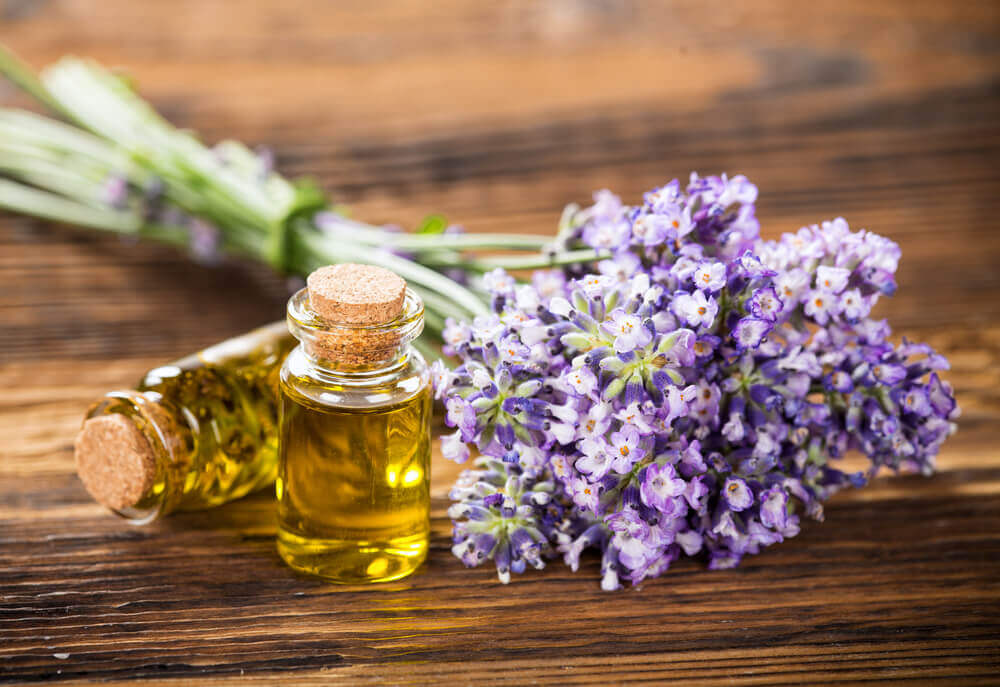
Why Does It Work?
Lavender is one of the most popular essential oils. Its use ranges from treating various ailments to aromatherapy. Lavender oil balances the production of natural oils on the scalp and helps in the regrowth of hair. (2)
The anti-bacterial and anti-microbial properties of Lavender help in fighting dandruff and other scalp infections. Lavender also has sedative effects that help you calm down and reduces stress.
How to Use It?
You should massage your scalp with a mixture of lavender essential oil and a carrier oil regularly to get optimum results. Apply this to your scalp and leave it for at least half an hour. You can even leave it overnight and wash your hair in the morning.
How Much to Use?
You can mix around four to five drops of the essential oil with a tablespoon of carrier oil, such as coconut or olive oil.
2. Peppermint oil for Hair Loss
Why Does It Work?
When you consider how to treat Hair Loss, there are two approaches. You can try to stop the hair from falling, or you can increase the rate at which it grows back. Peppermint works in both ways. Peppermint oil contains menthol which stimulates the blood vessels under the scalp and promotes hair growth (3). It’s antimicrobial, antifungal, and anti-inflammatory properties fight the most common skin conditions that cause hair to fall.
How to Use It?
You can mix peppermint oil with other essential oils for Hair Loss and a carrier oil and massage the mixture on your scalp. Wash it off after half an hour or so. Since peppermint is an astringent, it works better for those with an oily scalp. People with dry scalp may notice a slight irritation from peppermint. You will experience a tingling sensation in its application.
How Much to Use?
Mix around four to five drops of peppermint oil with coconut oil. You can also add other essential oils to increase the efficacy of the treatment.
3. Tea Tree oil for Hair Loss
Why Does It Work?
Tea tree oil is a potent essential oil that has cleansing capabilities in addition to being antibacterial and antimicrobial. The hair products you use may have clogged the follicles and causing Hair Loss. The cleansing action unclogs the clogged hair follicles and allows new hair to grow. Tea tree oil is one of the most widely used natural remedies for Hair Loss as well as dandruff. (4)
How to Use It?
Tea tree oil is a very powerful oil. You should be cautious while applying it. Never apply tea tree oil to your scalp without diluting it first with a carrier oil. As with peppermint, you may experience a slight tingling sensation on the application of tea tree oil.
How Much to Use?
You can mix four to five drops of the essential oil with a tablespoon of coconut, jojoba or olive oil. The mixture should be massaged on the scalp and left for at least half an hour before washing.
4. Ylang-Ylang
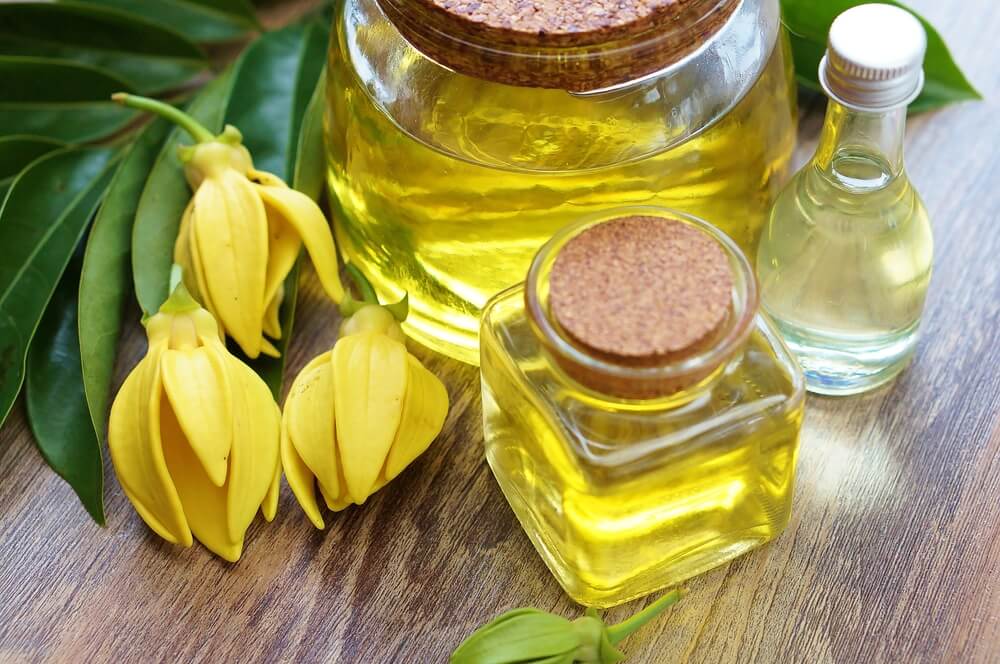
Why Does It Work?
Ylang-Ylang promotes the production of sebum, the natural oil on your scalp. If you have a dry scalp or if your hair has become dry and brittle, then this is the best oil to prevent Hair Loss. It makes your hair softer and improves its texture (5).
How to Use It?
Ylang-Ylang oil is best suited for those with dry scalp. If you have an oily scalp, then the increased production of oil may end up making things worse. You can create a mixture of Ylang-Ylang oil with a warm carrier oil and leave it for at least an hour. Heat the carrier oil slightly before mixing to get optimum results. If you are making the mixture and storing it ahead of time, then warm the mixture just before application. The heat allows for better absorption of the oils.
How Much to Use?
It is enough to mix a few drops of the essential oil with a tablespoon of carrier oil.
5. Vetiver
Why Does It Work?
Vetiver is known for its cooling properties. The top of the head is often the hottest part of the body, and the accumulation of heat can cause Hair Loss. Not only does vetiver cool the body, but it also helps in reducing stress. The astringent properties make it ideal for those with an oily scalp.
How to Use It?
You can blend vetiver with a carrier oil, such as jojoba oil and massage it on your scalp. You can also add other essential oils to maximize the benefits. The mixture should be left on for a few hours to get maximum benefits.
How Much to Use?
Around four to five drops of vetiver oil mixed with one tablespoon of jojoba oil should be enough for one application.
6. Cedarwood
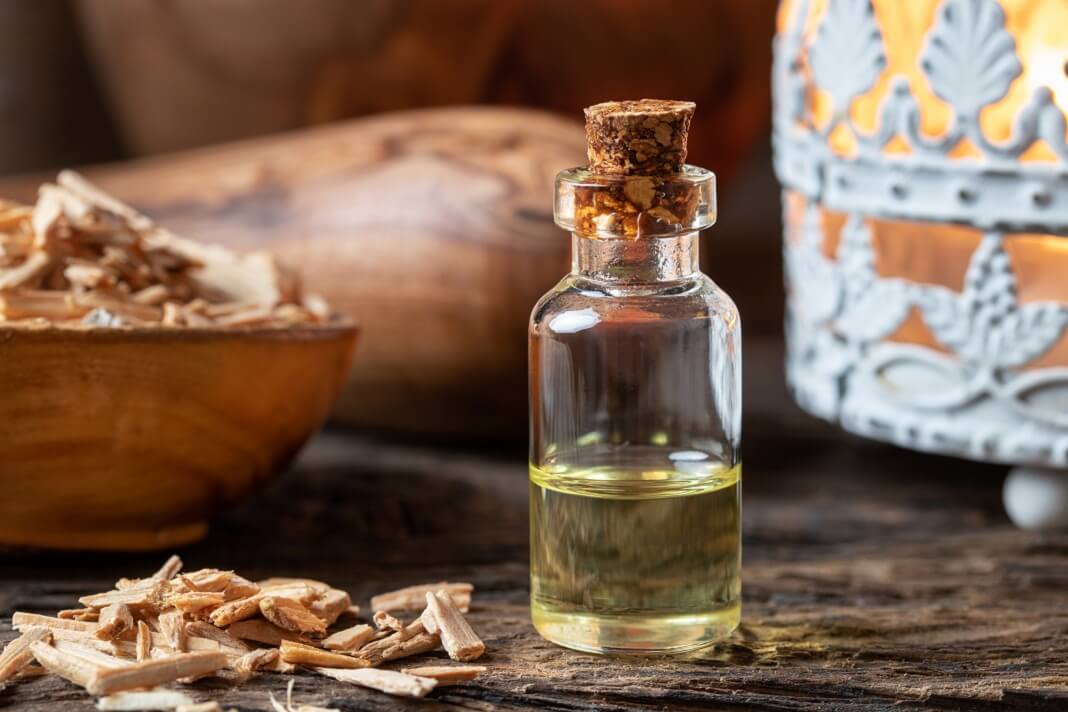
Why Does It Work?
Cedarwood oil balances oil production in the scalp. It is also antifungal and antibacterial. Due to these properties, it has been in use for centuries to combat alopecia, fungal infection, eczema, dandruff, and greasy scalp. Not only does it fight the causes of Hair Loss, but it also promotes hair growth.
How to Use It?
A study found that a mixture of cedarwood, thyme, lavender, and rosemary essential oils with jojoba and grapeseed oil was very effective in treating alopecia areata. (6) You can also customize the blend based on the availability of the oils.
How Much to Use?
When using the mixture containing other essential oils, then use three drops of each essential oil and take one tablespoon of jojoba and one tablespoon of grapeseed oil. If you choose to use only cedarwood essential oil, then you can combine four to five drops of essential oil with one tablespoon of carrier oil.
7. Clary Sage
Why Does It Work?
Are you wondering how to reduce Hair Loss in women? Clary Sage is the perfect solution for you. It is high in phytoestrogens and antioxidants. It also has calming properties and relieves stress. Its antiseptic properties make it ideal for fighting dandruff and scalp infections. Clary Sage contains linalyl acetate. (7) It is this component that gives lavender its Hair Loss fighting abilities, and it does the same for clary sage as well.
How to Use It?
As with other essential oils, you can create a blend of clary sage and jojoba oil and leave it on your scalp for an hour before washing it off. You can even mix a few drops of the essential oil with your conditioner. The oil will work its magic along with your conditioner.
How Much to Use?
If you are mixing with jojoba oil, then take five drops of clary sage oil for one tablespoon of jojoba oil. While mixing with conditioner, two or three drops should be enough for a single wash.
| The only part of the hair that is not dead is the part that is under the scalp. |
CURE 2: Hair Masks to Fight Hair Loss
Did you know that some of the most common items in your kitchen and pantry can be the answer to the question – what is good for Hair Loss? Here are a few such home remedies for treating Hair Loss.
1. Yogurt
Why Does It Work?
Yogurt is a rich source of protein and probiotics. The protein strengthens the hair shaft and prevents breakage. Probiotics alter the hair cuticles, making them smoother. (8) Probiotics also boost the absorption of vitamins A, B-complex, and K. These vitamins are crucial for healthy hair growth. The end result is stronger, shinier, and smoother hair. Yogurt is also helpful in treating dry and itchy scalp.
How to Use It?
There are two ways to use yogurt to prevent Hair Loss. You can consume a bowl of yogurt every day. Once a week, make a hair mask containing yogurt and apply it to your scalp and hair. It will moisturize your scalp and make your hair softer and smoother. The yogurt hair mask can work wonders if you suffer from split ends or hair breakage.
How Much to Use?
You can consume one small bowl of yogurt daily. If you are making a hair mask, then the quantity of yogurt needed depends on your hair thickness and length.
2. Egg for Hair Loss
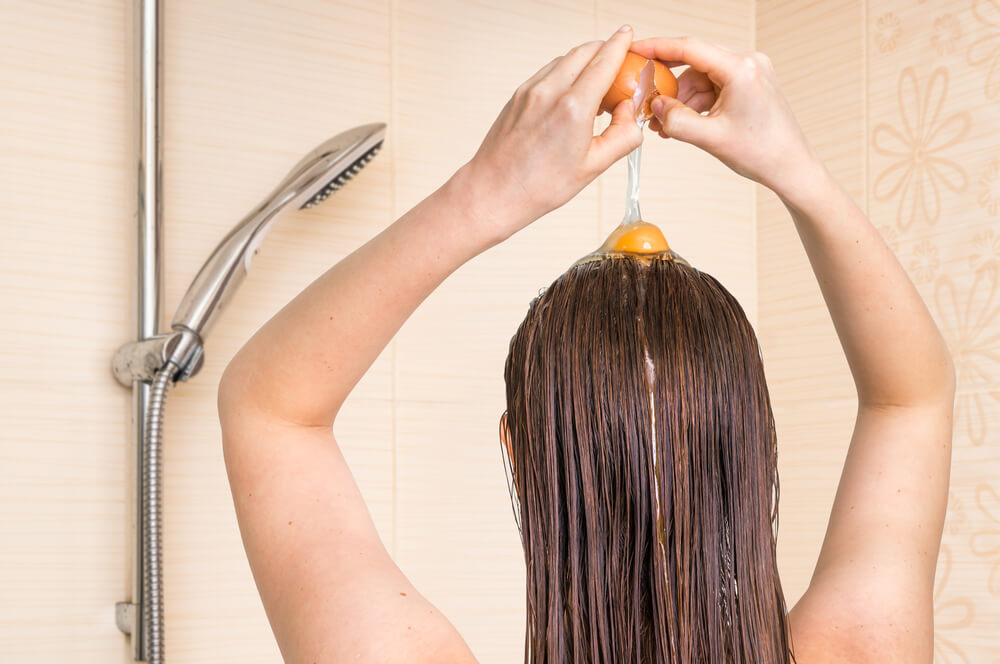
Why Does It Work?
Just like yogurt, eggs are also rich in protein. The water-soluble peptides that are present in the yolk of the egg help in stimulating hair growth (9). The proteins, sulfur, and phosphorous, in egg also strengthen hair and make it healthier.
How to Use It?
Take the yolk of one egg, beat it, and massage it on your scalp and hair. Leave it for around half an hour and wash it off using shampoo. If you are put off by the smell of this natural treatment for Hair Loss, you can try using just egg whites.
Beat the egg whites with a teaspoon of honey and olive oil. You should leave the mixture for at least 20 minutes before washing. Make sure that you use cold water when washing your hair. You don’t want to end up with scrambled eggs in your hair after all! The treatment should be done once a week.
How Much to Use?
One egg should be sufficient for one use. However, if you have long hair, try using two eggs.
3. Onion juice for Hair Loss
Why Does It Work?
Onion juice is very effective in treating alopecia areata. (10) It increases the blood flow to the hair cuticles and increases the keratin level. The increased circulation and keratin levels lead to an increased rate of hair regrowth.
How to Use It?
You blend an onion and squeeze out the juice. Apply this juice to the scalp and leave for half an hour to one hour before washing it off.
How Much to Use?
You may need to use one or two onions to get the required quantity of juice. You can do the onion juice treatment one or two times a week.
4. Fenugreek
Why Does It Work?
Fenugreek is another age-old natural remedy for Hair Loss. It nourishes and strengthens your hair(11). Fenugreek increases the blood circulation in the scalp, thereby stimulating the hair follicles and encouraging hair growth. It also softens dry and brittle hair.
How to Use It?
Fenugreek requires a little preparation before use. You need to soak the seeds overnight and grind it in the morning to make a paste. The paste can be applied on hair and left for around half an hour to one hour. You can then wash it off.
How Much to Use?
Around half a cup of fenugreek seeds should be enough for medium length hair. You can do this treatment once a week.
5. Curry Leaves
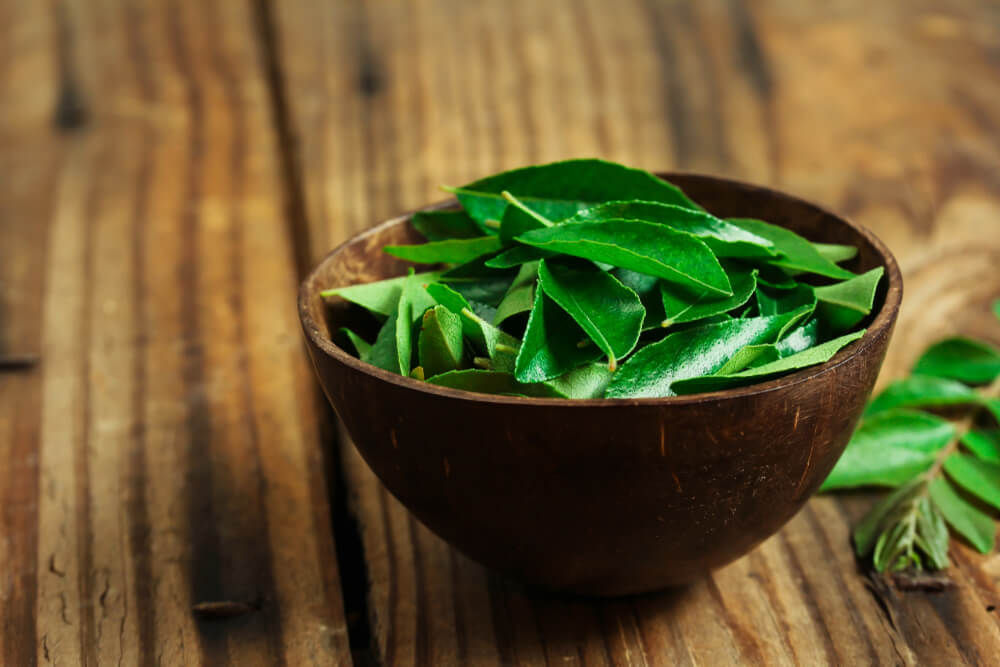
Why Does It Work?
Curry leaves are a rich source of antioxidants, amino acids, protein, and beta-carotene. Together, these ingredients strengthen your hair, promote hair growth, moisturize your scalp, and remove dead hair follicles. They are also high in vitamin B and help in retaining the hair color.
How to Use It?
Take a handful of curry leaves, mix it with half a cup of coconut oil, and boil the mixture at low heat. You will see a black residue after a while. Remove the oil from flame. You can apply this oil to your scalp and leave it for at least half an hour.
The oil can be applied every day before taking a bath. You can also make a hair mask by mixing the paste of curry leaves with yogurt. The mask should be applied to your scalp and left for at least 20 to 25 minutes before washing.
How Much to Use?
You will only need a handful of curry leaves. The curry leaf oil can be made in advance and stored in an airtight bottle. The mask will also require only a handful of leaves, but it cannot be made in advance.
6. Henna
Why Does It Work?
Henna conditions your hair strengthens it, makes it grow faster, removes dandruff, improves scalp health and cools your scalp. All of this results in a decrease in Hair Loss and an increase in the rate of hair regrowth. (12)
How to Use It?
Make a mixture of the paste of henna leaves, egg, and black tea. Apply this mixture to your scalp as well as hair. Leave it for around half an hour and wash it off. You can also leave it for longer if you prefer.
How Much to Use?
You will need around a cup of henna leaves. If you do not have access to henna leaves, you can also use the henna powder. Just make sure that you are choosing a good quality, organic powder that doesn’t contain any other additives.
| Hair is the second-fastest-growing tissue in the body. |
CURE 3: Supplements for Hair Loss
Certain vitamins and minerals are essential for the proper functioning of the cells in your body, including those that aid in hair growth and maintain hair health. When you start thinking about how to avoid Hair Loss, these nutrients should be the first on your list.
If you aren’t getting enough of them, then that may be the cause of the Hair Loss. Supplements are a great way to bridge this gap and ensure that your body receives everything it needs for healthy hair growth.
1. Iron
Why Does It Work?
Iron aids the body in producing hemoglobin. Hemoglobin is responsible for carrying oxygen to the cells that are responsible for hair growth. If you are not consuming enough iron as a part of your diet, you may experience a higher level of Hair Loss. (13)
How to Use It?
You should try to include more iron-rich foods, such as spinach, clams, oysters, dates, etc. in your diet. You can also use iron supplements from reputable brands if you are unable to meet your recommended daily allowance of iron through your diet alone.
How Much to Use?
The recommended daily allowance of iron is 8 mg for men, and 18 mg for women. Calculate how much iron you consume in a day and use supplements to meet the deficit.
2. Vitamin A

Why Does It Work?
Vitamin A is an antioxidant micronutrient that is very beneficial for hair growth. It helps in strengthening your hair and balances the sebum production on the scalp. (14) The sebum is responsible for nourishing your hair.
How to Use It?
Your body can synthesize vitamin A from foods, such as cheese, milk, eggs, green vegetables, carrots, mangos, etc. You can aid this process by taking vitamin A supplements.
How Much to Use?
Your body requires around 0.6 to 0.7 mg of vitamin A every day. However, too much of a good thing can also be dangerous. So, make sure that your diet and supplements together do not exceed 1.5 mg of vitamin A.
3. Vitamin E for Hair Loss
Why Does It Work?
Vitamin E is an antioxidant. It combats oxidative stress in the hair follicles and improves hair health. (15) It also strengthens your hair and adds a shine to it. Vitamin E improves the health of the scalp. It can fight dandruff and dry scalp.
How to Use It?
You can get vitamin E via supplements or via food sources, such as sunflower seeds, spinach, avocados, and almonds. You can apply vitamin E oil topically to the scalp.
How Much to Use?
Your body needs around 15 mg of vitamin E in a day. You should try to get the majority of this amount from food sources. The deficit can be made up with supplements.
4. Biotin
Why Does It Work?
Biotin is a water-soluble vitamin that plays an important role in improving the keratin structure in your body. Biotin deficiency can lead to Hair Loss. Those who take biotin supplements also experience a decrease in Hair Loss and an increase in hair growth. (16)
How to Use It?
Food sources, such as soybeans, egg yolk, nuts, mushrooms, cauliflower, whole grains, etc. provide Biotin. Biotin supplements are also readily available, and a doctor can tell you about the ideal dosage.
How Much to Use?
You need around 30 to 100 mcg of biotin every day. You can make up the deficit from your diet using supplements.
5. Zinc for Hair Loss
Why Does It Work?
Zinc is an essential nutrient for the repair and growth of hair tissues. It also regulates oil production by the hair follicles. It also regulates hormones, enzymes, and signal molecules in the body. An imbalance in any of these can lead to Hair Loss, making zinc vital for maintaining good hair health. (17)
How to Use It?
Foods, such as lentils, beef, spinach, oysters, pumpkin seeds, etc. are good sources of zinc. You can also use zinc supplements from reputed brands.
How Much to Use?
You need around 8 to 11 mg of zinc everyday. The ideal dosage for you can be determined by considering the zinc you get from your diet.
6. Vitamin C
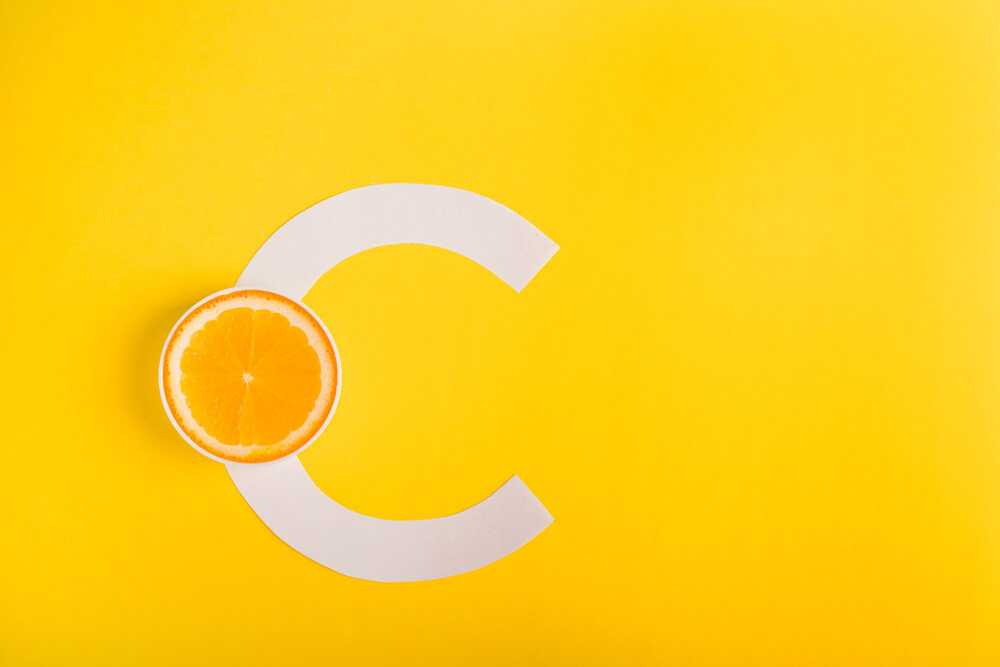
Why Does It Work?
Vitamin C follows a three-pronged approach to reducing Hair Loss. It is an antioxidant that combats oxidative stress to the hair follicles. (18) It also helps in iron absorption in the body. As mentioned above, iron plays a key role in improving hair health. The body also uses vitamin C to synthesize collagen, which is an important part of the structure of your hair.
How to Use It?
Strawberries, citrus fruits, and peppers are high in vitamin C. Vitamin C supplements are readily available and can be consumed orally.
How Much to Use?
Your body needs 65 to 90 mg of vitamin C per day. You can safely take a regular dose of the supplement since the upper tolerance limit of vitamin C is very high.
Contrary to popular belief, cutting your hair has no impact on the rate at which it grows.
CURE 4: Foods for Hair Loss
Nothing can beat food sources when it comes to providing the nutrients needed to improve hair health. While every food item has some nutrients, some food items are jam-packed with nutrients for hair health. Read on to get the answers to the question of what food is good for Hair Loss.
1. Spinach
Why Does It Work?
Spinach is loaded with vitamins A, B and C, iron, magnesium, and folate, among other nutrients. These play an important role in maintaining hair health, making it stronger, and helping the regrowth process.
How to Use It?
You can add spinach to smoothies, salads or incorporate it into other recipes.
How Much to Use?
Around a cup of spinach, a day can do wonders for your hair.
2. Fatty Fish
Why Does It Work?
The omega-3 fatty acids in fatty fishes aid hair growth and reduces hair fall. (19) These fish also contain selenium, protein, vitamin B, and D3 – all of these work towards strengthening your hair and reducing Hair Loss.
How to Use It?
Some examples of fatty fish are sardines, mackerel, salmon, and herring. If you suffer from severe hair fall, then have a portion of fish daily. You can add them to salads or have the main course centred around the fish.
How Much to Use?
You should try to include a portion of fish, that is around 150 to 200 gms of fish in your daily diet.
3. Avocados
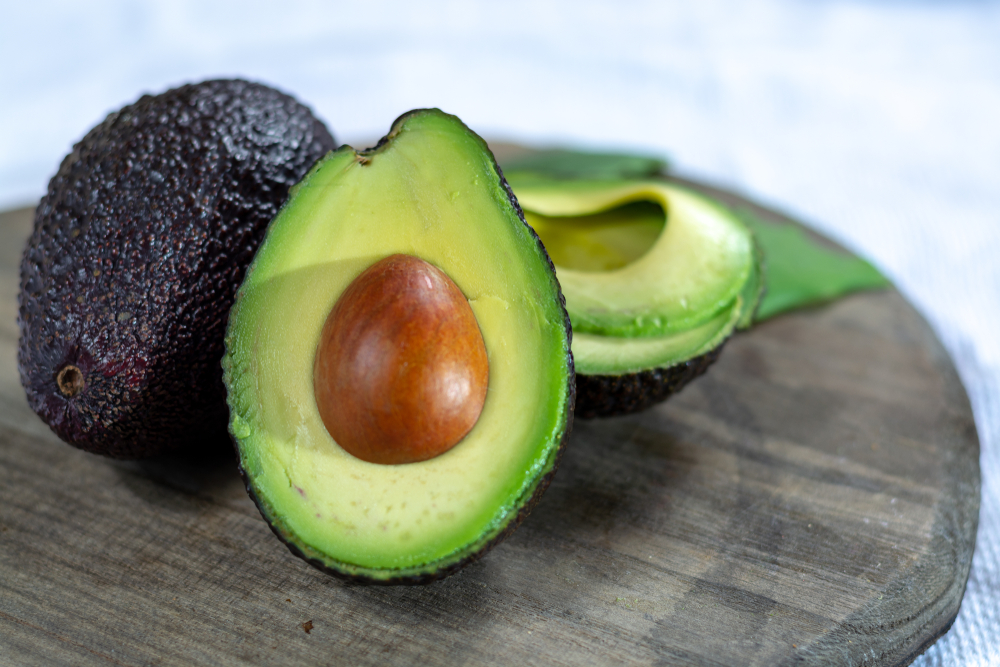
Why Does It Work?
Avocados are rich in essential fatty acids as well as vitamin E. Since your body cannot produce essential fatty acids, you must consume foods containing them to meet the body’s demand. The fatty acids are building blocks of cells that are involved in hair growth. (20) Vitamin E is an antioxidant that neutralizes the free radicals and fights scalp damage.
How to Use It?
There are many ways to incorporate avocados in your diet. You can make an avocado spread for your toast or add it to smoothies. Avocados are also great for making creamy salad dressings. Guacamole and chips are an all-time favorite way to consume avocados.
How Much to Use?
You can safely consume around half an avocado per day.
4. Berries
Why Does It Work?
Berries are rich in vitamin C in addition to other vitamins and minerals. The benefits of vitamin C for hair growth has been mentioned in the previous section. Berries are a tasty and healthy way to get these benefits.
How to Use It?
You can add berries to smoothies, yoghurt oatmeal, desserts, or eat them raw.
How Much to Use?
You should aim to consume around half a cup of berries in a day.
5. Nuts
Why Does It Work?
Nuts are loaded with vitamin B, E, zinc, and fatty acids. (21) Since there are different types of nuts, you can make these a part of your daily diet without feeling monotonous.
How to Use It?
You can have nuts as a healthy snack in between your main meals. You can also use nut butter on your toast.
How Much to Use?
Since nuts are high in fatty acids and calories, a handful is enough for a day. Try not to go overboard with the nuts as it can lead to weight gain.
6. Seeds

Why Does It Work?
Want all the nutrients, but not the calories? Seeds are the way to go. Seeds, such as chia, flax, sunflower, pumpkin, etc. are high in zinc, selenium, omega-3 fatty acids, and vitamin E.
How to Use It?
You can add seeds to your salads for a crunch factor. You can even add them to your smoothies or consume it raw as a snack.
How Much to Use?
You should consume around a tablespoon of a mixture of seeds in a day to get the optimum results.
The lifespan of hair is between two to six years.
Stop Your Hair Fall and Enjoy Healthy Hair
Hair Loss is a phenomenon that impacts a lot of people globally. For a lot of them, Hair Loss is a result of lack of proper nutrition. Even when it is caused by certain diseases, natural remedies that improve hair health has proven to be a very effective treatment. It is a surprise to you that stress can cause Hair Loss.
In such cases, remedies, such as essential oils that help you calm down and relax have proven to be a good treatment. To answer the question of what is good for Hair Loss, you first need to answer what causes Hair Loss and find a remedy from the ones mentioned above that target the cause.
In some extreme cases, the damage may be irreversible, and you may have to go for hair replacement techniques. But unless that is the case, natural remedies are a safe and effective way to treat Hair Loss. Even if you do not suffer from increased Hair Loss, you can use these techniques as a preventative measure.
Also Read: Top 5 Best Foods For Healthy Heart
FAQs
1. Is my Hair Loss permanent?
It depends on the cause. If it is caused by scalp infections, certain diseases, stress, or lack of proper nutrition, then it may not be permanent. Treating the underlying condition and using some natural remedies should reduce Hair Loss and help your hair grow back. However, in some unfortunate cases, the damage to your hair follicles may be permanent.
2. How do I decide which natural remedy to use?
You can start by identifying the cause of your Hair Loss and narrow down the list of remedies to those that target your issue. Then select the one that you are sure you can follow on a regular basis.
3. Are these remedies safe?
Almost all-natural remedies are completely safe to use. If you are taking supplements, then consult a doctor to make sure that you are taking the correct dose.

